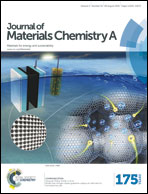Metal–organic framework thin films: electrochemical fabrication techniques and corresponding applications & perspectives
Abstract
Metal–organic frameworks (MOFs) hold tremendous promise for various academic and industrial applications because of their structural merits (e.g., high surface areas, enormous porosity, and regular order). Recently, processable MOF films have been sought for applications in various technologies, from separation to sensor devices. Essentially, MOFs deposited as thin films, with thicknesses ranging from nanometres to micrometres, low roughness and high homogeneity, are important for practical use and application-specific configurations, particularly in sensors and electric devices. Several innovative scientific methods have been developed for preparing MOF thin films. Among these methods, the electrochemical method is advantageous because it requires mild preparation, uses a short growth time, is easy to scale up and allows for controlling the phase/morphology and thickness by altering voltages in the process of fabricating uniform and dense MOF thin films. This review focuses on recent developments in electrochemical methods for forming metal–organic framework thin films (e.g., preparation, growth mechanisms and characterization techniques) and their corresponding applications in sensing and micro-pattern devices and identifies the challenges that must be overcome.

- This article is part of the themed collection: 10th Anniversary: Dedicated Authors

 Please wait while we load your content...
Please wait while we load your content...